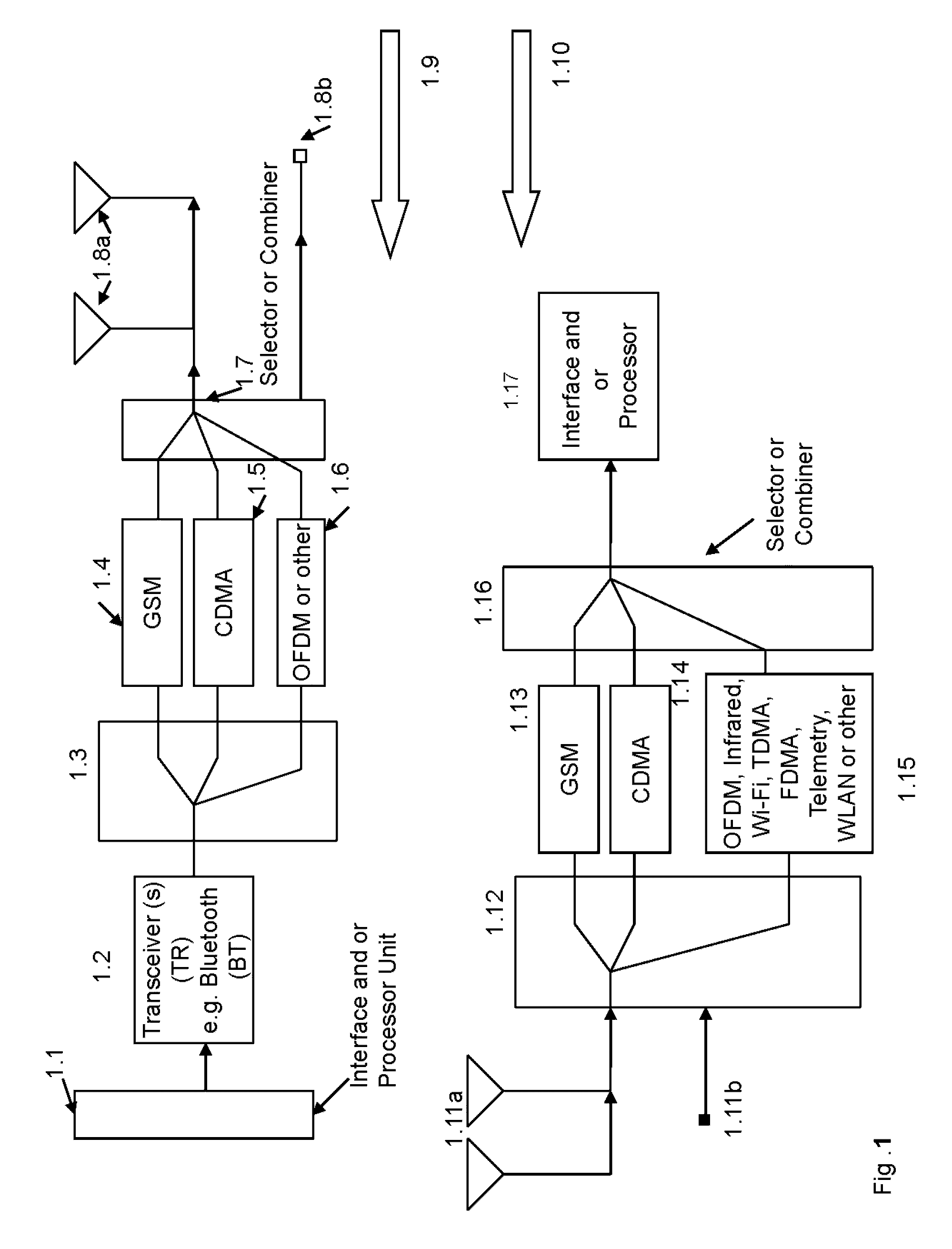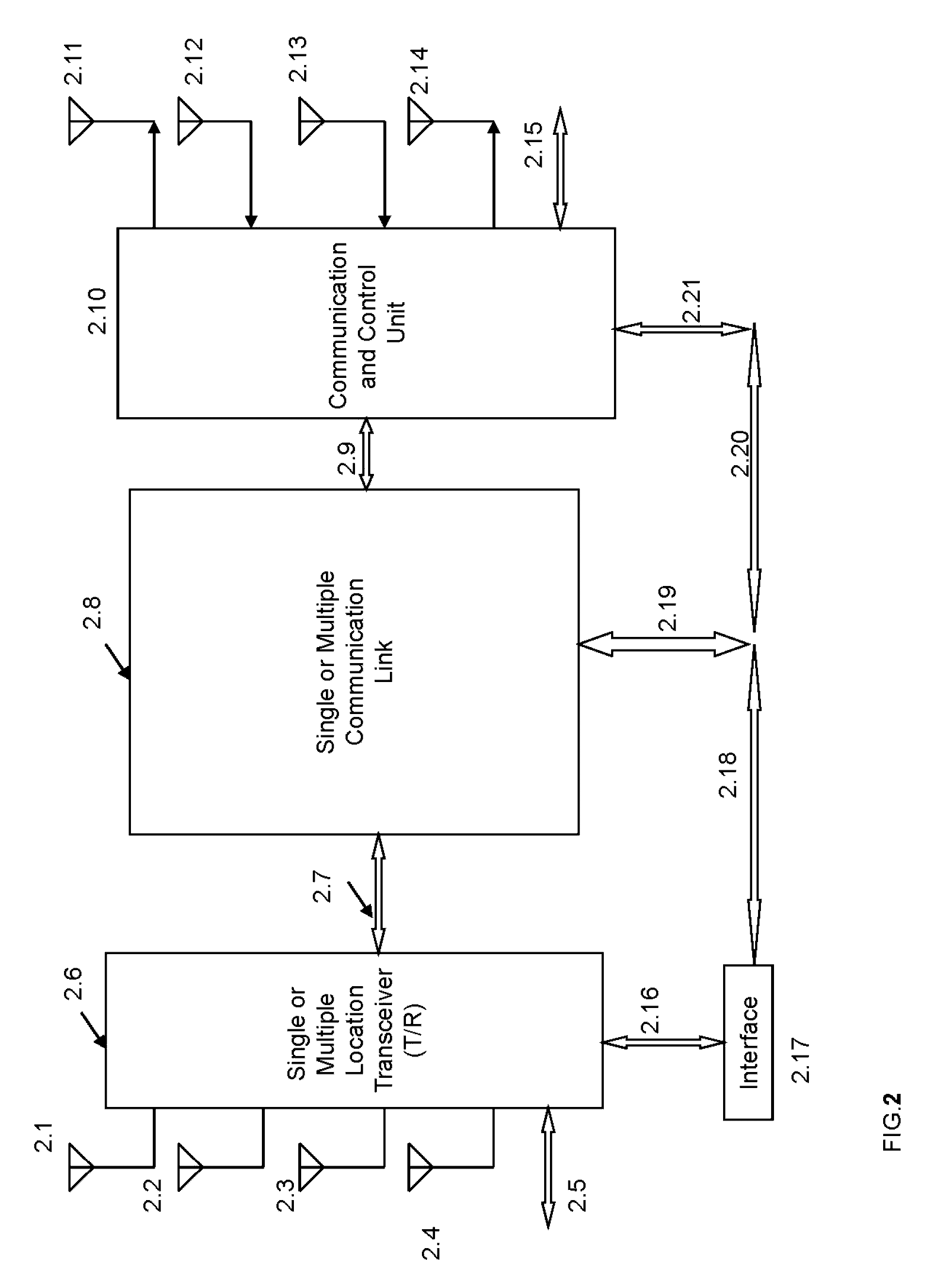DNA and fingerprint authentication of mobile devices
a mobile device and fingerprint authentication technology, applied in the direction of transmission path division, eavesdropping prevention circuit, instruments, etc., can solve the problems of not being able to provide enhanced services to mobile users over a wide area, not having readily and widely accessible cellular and cellular interconnections, and many wide bandwidth applications and services that are rapidly evolving, so as to reduce the number of cables, eliminate the cumbersome connection of cables, and remove or minimize cables for patient monitoring
- Summary
- Abstract
- Description
- Claims
- Application Information
AI Technical Summary
Benefits of technology
Problems solved by technology
Method used
Image
Examples
Embodiment Construction
”.
BRIEF DESCRIPTION OF THE DRAWINGS
[0108]FIG. 1 shows implementation structures for single and or multiple communications systems, including single and or multiple location or position finder systems, Radio Frequency Identification Devices (RFID), medical diagnostics, emergency and remote control systems.
[0109]FIG. 2 is a structure of a multi mode location and multi-mode communication system, including wireless, wired (or cabled) and internet-web based connections with single or multiple communication links and or communication transceivers (T / R) and or communication and control units.
[0110]FIG. 3 is a structure of a system having single or a plurality of selectable Position Determining Entity (PDE), Base Station Controller (BSC), Terminal (Subscriber Unit) Base Station Transceiver Subsystem (BTS) devices.
[0111]FIG. 4 shows embodiments and structures for systems and networks containing Multiple Position Determining Entity (PDE), Base Station Controller (BSC) units, Terminal or Subsc...
PUM
 Login to View More
Login to View More Abstract
Description
Claims
Application Information
 Login to View More
Login to View More - R&D
- Intellectual Property
- Life Sciences
- Materials
- Tech Scout
- Unparalleled Data Quality
- Higher Quality Content
- 60% Fewer Hallucinations
Browse by: Latest US Patents, China's latest patents, Technical Efficacy Thesaurus, Application Domain, Technology Topic, Popular Technical Reports.
© 2025 PatSnap. All rights reserved.Legal|Privacy policy|Modern Slavery Act Transparency Statement|Sitemap|About US| Contact US: help@patsnap.com



